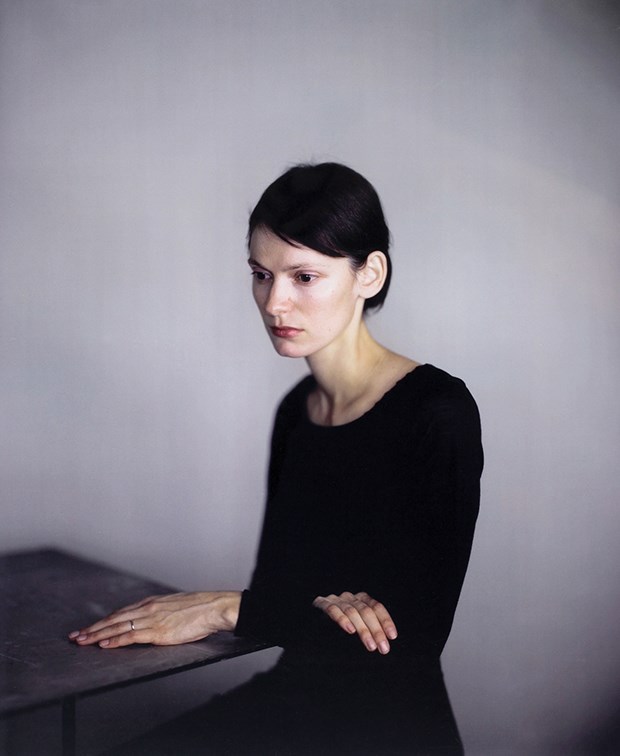Eye to Eye exhibit, drawn from the collection of Claudia Beck and Andrew Gruft, animates the dynamics between photographer and subject, until July 26 at Presentation House Gallery. Beck and Gruft will discuss their collection at PHG on Thursday, July 16 at 7:30 p.m. For details visit presentationhousegallery.org.
Andrew Gruft knows exactly how important making eye contact is when it comes to human connection - that's how he met his wife, after all. He spotted Claudia Beck in the hallway at UBC in the 1970s. Gruft was a professor of architecture, while Beck, who had just arrived from her native U.S., taught art history - and their faculties happened to be in the same building.
Gruft is shy and would rather not say when asked what immediately struck him about Beck. Clearly there was chemistry between the two, based on his coy response. But he remembers Beck spoke with a thick New Jersey accent and it was hard for him to understand what she was saying. Plenty of eye contact surely filled in the conversation gaps.
The two began dating and Beck introduced Gruft to art photography, as he calls it. At the time Gruft could appreciate photography like the average person, but he most certainly was not a shutterbug. The longer he dated Beck, however, the deeper his appreciation for photography grew, along with their collection - to the point of obsession. "I was interested in photography as someone who took photographs and nothing very professional, just taking photographs of trips and birthdays - says Gruft.
Gruft and Beck's motivations and processes for collecting photography will be discussed as part of the exhibit. The couple's ever-growing collection spans from photography's beginnings in the mid-19th century to the present day, and is considered one of the most significant privately-held photography collections in Canada. But it's the classic photographs of the 20th century that caught Gruft's attention the most - particularly when he saw Robert Frank's work The Americans, an influential book of photographs taken during the postwar period in America that contrasted the high and low strata of society.
"That was really something that knocked me over," recalls Gruft. "Well, it was different. When I first saw it I realized how kind of daring and different and, what can you say, innovative it was. We were used to those kind of impulsive pictures where we got the photographs as they happened. And Frank's was much more psychologically driven. It was much more about the feel in the photo, the feel of the people in the photograph - so, it had a completely different feel to it." Embracing a broad interpretation of portraiture, Eye to Eye brings together in the intimate Presentation House space a range of prints, videos and books and animates the dynamics between a photographer and subject, of observing and being observed. The complexities of capturing people through a camera is not a subject Gruft is well versed in, but he knows the key element that when perfectly executed results in an image that stirs emotion.
"It's an interaction, right?" says Gruft. "You're not actually capturing, as interacting with someone in some kind of way. When you are photographing someone face-to-face - eye contact - that's very different. And that interaction is important because it comes across in the image. You get the feeling of what is going on. The portraits are always in a sense a portrait of the photographer as much as the person being photographed." Case in point, Gruft's feelings towards an image of an old peasant couple captured by acclaimed German portrait photographer August Sander featured in the Eye to Eye exhibit.
"It's so moving - there's this old couple sitting very straight," explains Gruft. "You know, Sander did this huge body of work trying to show the German people. He took photos of all different kinds of people in different professions, social strata and so on."
The biggest conversation piece of the exhibit, perhaps, is a larger-thanlife photograph by Richard Learoyd that Gruft admits he splurged on. Measuring 58 x 48 inches the haunting image of a young woman dressed all in black sitting motionless with her arms purposely crossed was captured using a pioneering form of photography: the camera obscura.
Learoyd made his own room-sized camera to achieve grainless images that command the viewer of the photograph to focus directly on the emotion. They are one-off photographs, with no negative or digital file, and therefore all the more valuable. In fact, Gruft considers the Learoyd piece a lucky get, because more often than not he is priced out in the highly competitive photography-collecting arena.
The Eye to Eye exhibition features classic prints by renowned photographers including Eugène Atget, Bruce Davidson, Robert Frank, Helen Levitt, Daido Moriyama, August Sander, and Edward Weston - as well as contemporary works by Kristen Abdai, Raymond Boisjoly, Anne Collier, Katy Grannan, and Evan Lee among others.
Paring down the diverse range of an estimated 500 photographs from the Gruft/ Beck collection into one focused exhibit wasn't as big a feat as one might think for curator Helga Pakasaar. "I had this very loose idea, portraits," explains Gruft. "It's portraits in the widest sense. It's not just straight-on portraits of people. It's photographs of people doing stuff and there are abstract portraits. It's a show that was done quickly without a huge amount of fuss or pretension. It's a pretty straightforward show." Gruft's hope is that people that see the Eye to Eye exhibit will develop a greater appreciation for photography like he has.
"People tend to think of photography in a rather limited sense - particularly now with cell phones," says Gruft. "Everybody takes photographs and there are billions of photographs floating around. I think (with this exhibit) they might get the range and breadth of photography and what a great medium it is."



